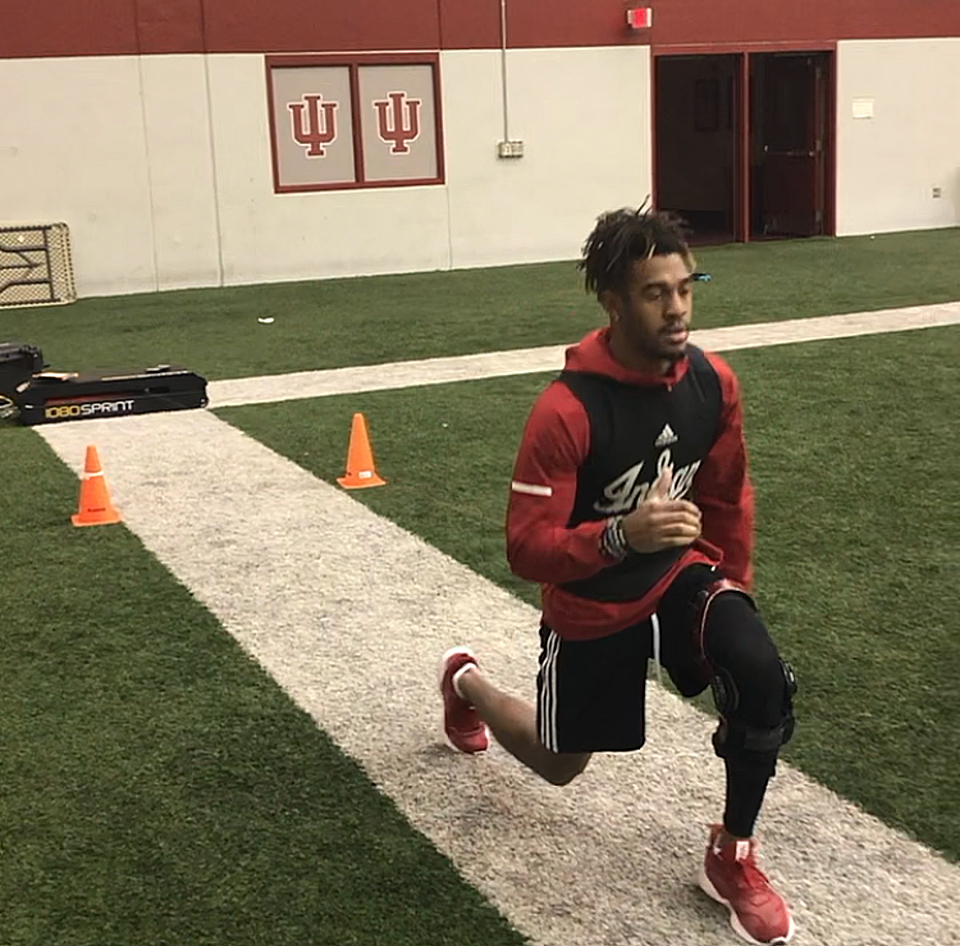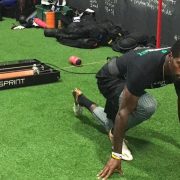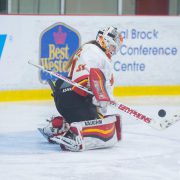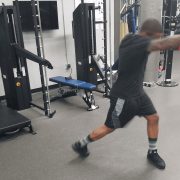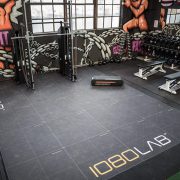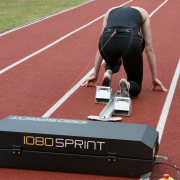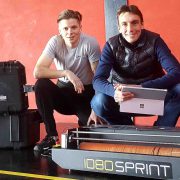Matt Rhea is a speed guy. A PhD in fact, focusing on performance enhancements largely centered on making athletes faster on the football field. In just over a year as the Athletic Performance Coach for Indiana University’s football program—after a stint as the Head of Sport Science at the IMG Academy—Rhea has helped guide the squad from six players capable of sprinting at 21 mph, all the way up to thirty-four.
Having already previewed his speed curriculum in “Speed 101,” Rhea recently joined us to discuss a topic for which velocity is just one of multiple components: Peak Power. How can peak power be measured and managed? How do you develop the quality on the field and in the weight room? And, how do you bring players back to their previous power outputs after they’ve suffered a significant injury?
1. Train Speed Specific to the Sport
Perhaps you remember Ronaldo Nehemiah’s football career. Or, more likely you don’t—the record-setting hurdler ran the deep fly and not much else during the couple seasons he spent with the San Francisco 49ers before being replaced by a more dexterous and powerful route-runner (some kid named Jerry Rice).
“Football is generally a curvilinear speed sport, so very rarely are you sprinting in a straight line,” Rhea says “But, there are what I call wiring components on how the brain coordinates speed, and whether it’s applied in a linear fashion or curved running or field-based pursuit or evasion, a lot of those wiring elements are the same. You can train them in different ways—for instance, resisted or assisted sprinting.”
While speed is often represented by a single number quantifying how long it takes to travel from Point A to Point B (such as a timed 40), Rhea prefers to peel back the array of factors between those two points, qualities that reflect not just speed but also key markers of power—crucial metrics since Rhea and IU Director of Athletic Performance David Ballou aren’t simply training track stars who can stretch the Cover Two on a go route. Even when using the program’s 1080 Sprint for assisted or resisted sprint training, Rhea pairs those runs with patterns or movements likely to occur on the football field, connecting those wiring components of speed to football-specific explosiveness and coordination.
“The data that the 1080 gives me is just phenomenal. The ability to see the force output, what the power production is, the different stages of a sprint, right-to-left comparisons, all that stuff is just gold for a sport scientist like me,” Rhea says. “I’m extracting data all the time and looking at it to see where the athletes are at, comparing it over time and tracking how they’re developing power in different segments of a run, seeing what their speed actually looks like.”
2. Prime Force to Game Tempos
The snap in football is just that—a split-second, with the first collision at the line occurring in roughly the same amount of time a major league hitter has to connect with a 95 mph fastball. And then, quickly, it’s over—the entire duration of the average college football play is barely more than 5 seconds (see Matt Rhea, Robert L. Hunter, & Tony Hunter).
“In football, we know contact off the line of scrimmage happens in .45 seconds,” said David Ballou, talking at IU’s 2018 Media Day. “So we’re going to make sure that every one of our offensive and defensive lineman, that their velocity curves, that their peak power, that they have the ability to hit their peak power in front of .45 seconds.”
In other words, a 350 lb lineman’s double-bodyweight squat means a lot less if it takes them .7 seconds to reach their peak power—at the snap, they’ve already been pushed back onto their heels or straightened up before they can express their maximal strength. In order to develop more rapid and impactful force production, Rhea first discusses the need to “triangulate data” to assess limiting factors.
“It might be that an athlete can’t create enough force, so it just takes the musculature and the contraction patterns more time to exert enough force to throw a medicine ball or to move their body mass,” Rhea says. “They might have a lot of strength, but it’s not happening fast enough—which might be more of a neurological component. So, we have to look at multiple sources of data to really determine what the limiting factor is and why it’s not happening as fast as it needs to. Once we identify that, then that drives the training method.”
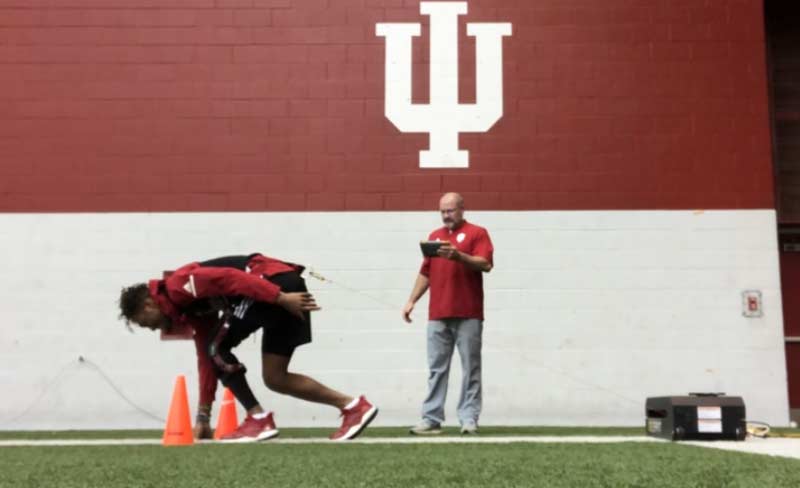
Image 1. Matt Rhea using 1080 Sprint for a resisted run to train peak power.
Based on the traditional strength-building programs most Division 1 football players have been exposed to through high school and the early stages of their college careers, Rhea has found that the majority of his athletes have enough of a strength foundation that “strength” is not the limiting factor in the rate of force production. So, to achieve peak power more quickly, Rhea says he and Ballou tend to focus more on the neurological component than the muscular.
“Much faster movements, faster movements at lighter to moderate amounts of weight, plyometric type activities, and again, things like resisted and assisted actions from a running standpoint,” Rhea offers as ways to train toward this goal. “Just as an example, if an athlete does a medicine ball throw and their power output is okay but it needs to be improved, then we might move to a lighter and faster and more explosive medicine ball throw.”
3. Track Trends First. Make Decisions Later.
If you know what a number should be—say, an internal body temperature of 98.6 for a healthy human being—then you can apply a mix of art and science toward interventions that will reduce the number when elevated or raise the number when sub-optimal. But for numbers where the norms are not so universal—such as peak power—before applying the combination of art and science to move that number, it is important for performance professionals to first understand how those numbers behave without intervention.
“You have to get data and you have to live in the data for a good amount of time before you really know what it’s telling you and what it’s not telling you,” Rhea says. “There was a phase where Dave Ballou and I were collecting data and looking at it, and trying to make sense and give it a perspective that would then allow us to make decisions.”
In order to justify the time and effort involved in collecting and tracking data, that data should have the capacity to support and inform decision-making; that being said, applying data to make the right decisions requires patience and perspective. While the large size of a college football team presents countless logistical challenges, one upside for Rhea has been the sheer volume of data available for comparison and analysis.
“One of the advantages I have of working in a large team setting is being able to get 100 or more athletes on [a new technology] to accumulate data quickly. Which is one of the things I think professionals have to do,” Rhea says. “Before you can really make those decisions, you need to know what the power output is supposed to look like in the first five yards of a sprint for a football player, versus the power output in the next five yards. Or what average and peak speeds are supposed to look like in certain positions. You have to have a perspective on the data before you can truly make decisions based off of it.”
4. Emphasize Single-Leg Movements
Acceleration. Change of direction. Firing off the ball. Ballou identifies the ability to apply force into the ground with a single leg as the key to a majority of game-specific movements, further stating that “One of the lead things that transfers to the football field at the highest level is single-leg movements in the weight room.”
“The first area that we look at is just basic power levels on one foot compared to two feet,” Rhea adds. “If you compare force or power in a double-leg movement to a single-leg movement, like a squat to a split jump or a squat to a step up, or a vertical jump compared to a single-leg vertical jump, you can start to see ratios that tell you whether an athlete is good on one foot or not so good on one foot. For those athletes who are not so good on one foot, the obvious way to proceed is to give them more single-leg activities. So, we’ll do a vertical jump test and then a single-leg vertical jump test, comparing the power outputs from the two. Athletes who are low on that scale certainly need more single-leg movements.
Given this focus on the ability to express power from a single leg, Rhea applies the 1080 Sprint as a tool for both testing and training.
“Comparing left to right ratios in single-leg movements is also something that I see as a great value of the 1080 Sprint. I can test a vertical jump and compare left leg and right leg single-leg vertical jumps to look at those kinds of ratios,” Rhea says.
“We’ve also (used the 1080) for some single-leg bounds and some resisted single-leg jumps. The no-flyweight setting is really smooth and there’s not a lot of jerking around from the resistance, so it’s a smooth jump and they get consistent resistance from the machine.”
5. Use a Needs Analysis to Individualize Power Training
While the split-second for contact off the snap provides one benchmark for rate of force production, Rhea also analyzes a range of other markers as well as more general qualities that influence power output.
“For an athlete who is below average or on the lower end of that power production scale, we might give him more resisted running, more heavy resisted running, more resisted running out of a football stance where they have to generate that power very, very quickly as though they’re in a football game,” Rhea says, describing athletes that need improvement in the acceleration phase of a sprint.
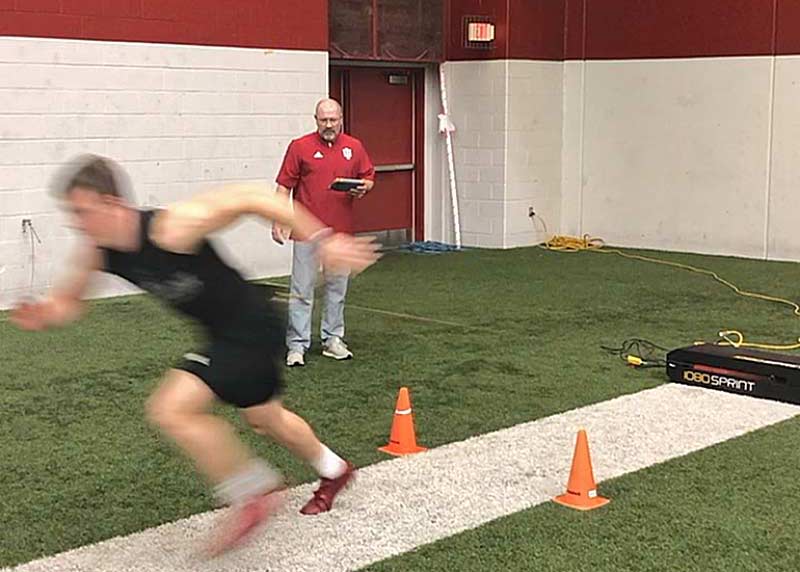
Image 2. Rhea training acceleration with resistance on the 1080 Sprint.
By contrast, other athletes on the squad show strong numbers in the first ten yards of a sprint, but then after fifteen or twenty yards lack the max speed characteristic of their position group. In those cases, rather than focusing on resisted work, Rhea might instead individualize their programming to feature more assisted sprinting.
“[Taking] an example of an athlete whose acceleration is good, but their speed either in transition to top speed or their top speed is lacking, we might use more assisted sprinting, more longer resisted runs compared to an acceleration run that might be 10-12 yards… we might go up to 30 or 40 yards, and do so at a much higher speed that is much closer to maximum speed.”
In addition to analyzing the numbers that make up a sprint, Rhea also examines peak power and rate of force development for jumps, med ball throws, bounds, and other movements.
“Rather than just look at how much power an athlete generates when he does a jump, I’m looking at how fast he got to that speed or that amount of power,” Rhea says. “And there’s actually quite a bit of difference from athlete to athlete, even in something like a vertical jump. Certain athletes achieve peak power much sooner in the jump than others, and on a football field those guys have an advantage.”
6. Track Return to Play as a Longer Route to the Same Destination
By collecting data on his athletes at the outset of training, Rhea then has comparative baselines to guide return-to-play protocols in the event of an injury. Particularly for ACL or lower-limb injuries, once the recovering athlete is capable of performing a run, Rhea will apply a minimal amount of resistance with the 1080 to capture data reflecting the differences in power outputs between the healthy leg and the injured one.
“That [power output] data is then shared with our sports medicine staff, so they can track that over time and they may make some changes to their rehab protocols or progress an athlete to higher speed running, something like that,” Rhea says. “But that’s the kind of data we’re sharing with our sports medicine staff and contributing to their process of rehab.”

Table 1. Each spike represents the power generated by each leg during push off. Athlete showing much lower power output in ACL repaired leg.

Table 2. Some difference exists one month later but the asymmetry is becoming less and less noticeable.

Table 3. By month 3 there is very little difference in power output between legs, signaling a return to symmetry and power balance during sprinting.
With ACL injuries, when the athlete has been released from their rehab protocols—but are still in a transitional phase before engaging in full, aggressive team training—Rhea also applies the 1080 Sprint for assisted and resisted lunges to challenge the athletes with a specific stressor.
“If you can just envision an athlete doing walking lunges directly toward the machine, that tether is pulling them at a very precise amount of assistance,” Rhea says. “The athlete is doing the lunge, but it’s accentuating the stability on the land. As they lunge forward, the machine is pulling them forward and they have to resist and stabilize with each step. In this case I’m primarily just watching for stability. So I’ll watch how stable they are on their repaired leg versus the healthy leg, watch how they move, and I just use the machine to provide the stress of that anterior shift that the ACL is trying to prevent.”
In addition to progressing that assistance over time, Rhea will also turn the athletes in the opposite direction to do resisted lunges away from the 1080 Sprint, generating power and force data for each leg similar to what he might see in a resisted run.
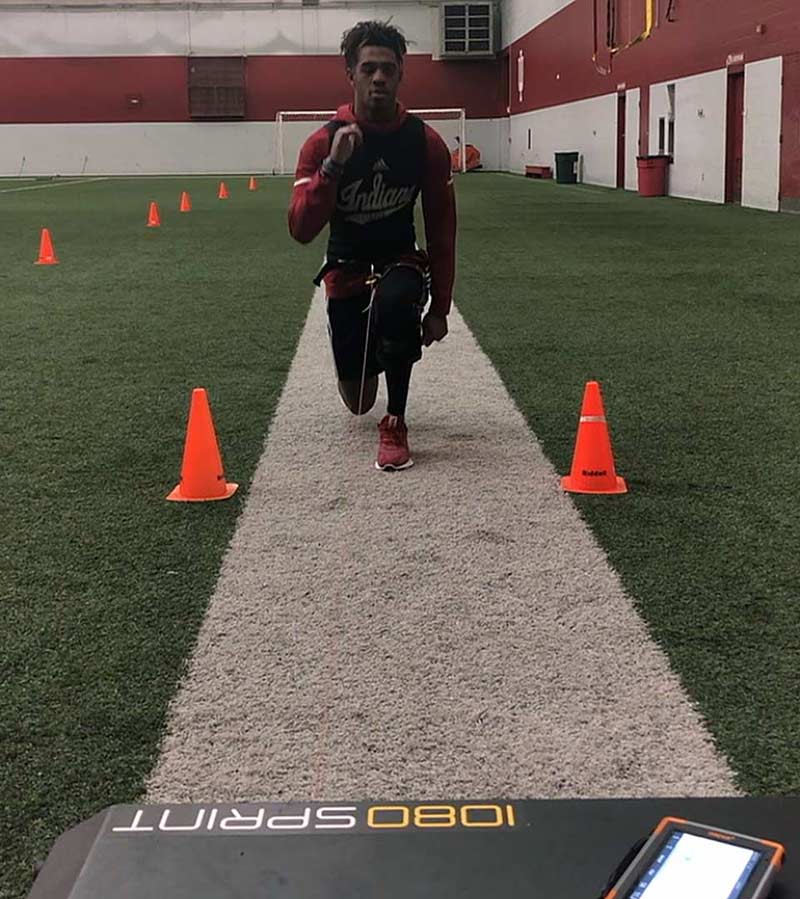
Image 3. Athlete performing a resisted lunge, with Rhea using resisted and assisted lunges as part of his return to play process.
“As those ratios become closer to normal, we know that the athlete is prepared to progress further into more aggressive training,” Rhea says. “As they get closer and closer to returning to play, they need to experience a more dynamic stress in order to make that jump from the controlled rehab setting to a very uncontrolled field sport. I think that type of exercise helps us there.
“The feedback from the athletes is that it is very challenging—they start to realize how close they are to competition and getting back to 100% as they feel their knee being able to stabilize in that type of a situation. Obviously, the next progression from there is some single-leg jumps that we then monitor and measure as they are able to do a more ballistic movement. But a dynamic movement like an assisted walking lunge, or even a resisted walking lunge, is a great stimulus to get their muscle coordination and the contraction of all the musculature that crosses the knee and stabilizes the knee. To get all of that to work in coordination as it is supposed to is only something that comes from fairly dynamic exercise.”
7. Show, Don’t Tell
High-level athletes tend to be intrinsically motivated to improve, but having objective data at hand can push them to continue on their path and validate the effort they’ve invested in shoring up deficiencies: whether that be gaining a measurable mph in sprint speed or improving a notch in peak power output.
“For a recovering athlete, I think the data builds confidence,” Rhea says. “When they see the objective data, they can start to realize that they are actually at 80% or 85% or wherever they’re at. I definitely think it helps from a confidence standpoint, and feeling comfortable getting back into regular training, and getting comfortable pushing themselves at a level that college football requires.
“From a performance standpoint, I think most athletes really enjoy seeing performance data. Once our athletes started to see that there was a lot more to a sprint than just your 40 time, I think they start to fully realize how advanced our system is at identifying their limitations and knowing how to address them. So, we’re some of the only people our athletes are comfortable about having find their flaws… because they know if we can find them, then we can fix them.”
